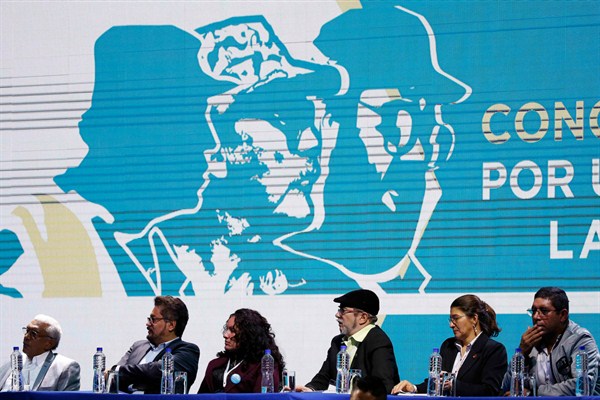In late August, Colombia’s largest guerrilla movement, the FARC, launched a new political party, known as the Common Alternative Revolutionary Force—preserving the FARC acronym. It was the latest step toward the FARC’s political normalization after last year’s historic peace accord. In an email interview, Adam Isacson, a senior associate for defense oversight at the Washington Office on Latin America, explains how the new party fits into Colombia’s political landscape and assesses its chances for electoral success.
WPR: What history does the FARC have in establishing a political party in Colombia, and how might that influence the current formulation and decision-making of its new party?
Adam Isacson: This is the second time that the FARC will attempt to form a political party. The first time went badly. During a 1980s peace process, though no accord was in place, the FARC spawned a leftist party, the Patriotic Union, which it expected would help bridge its transition to civilian politics. Patriotic Union candidates won many offices and FARC leader Ivan Marquez even served in Colombia’s Congress during the mid-1980s.

